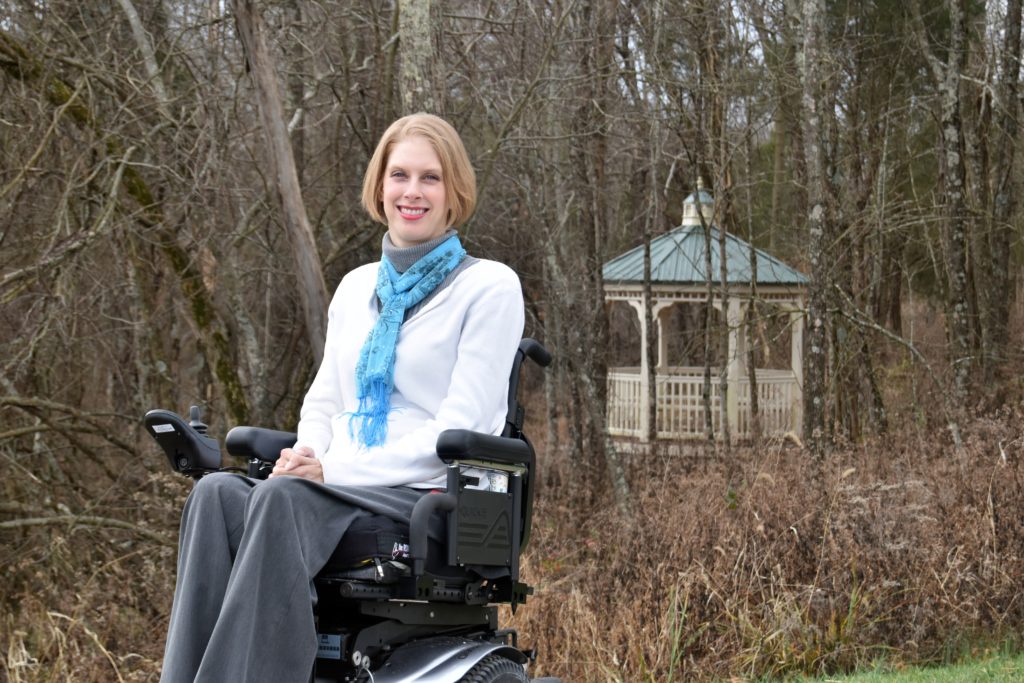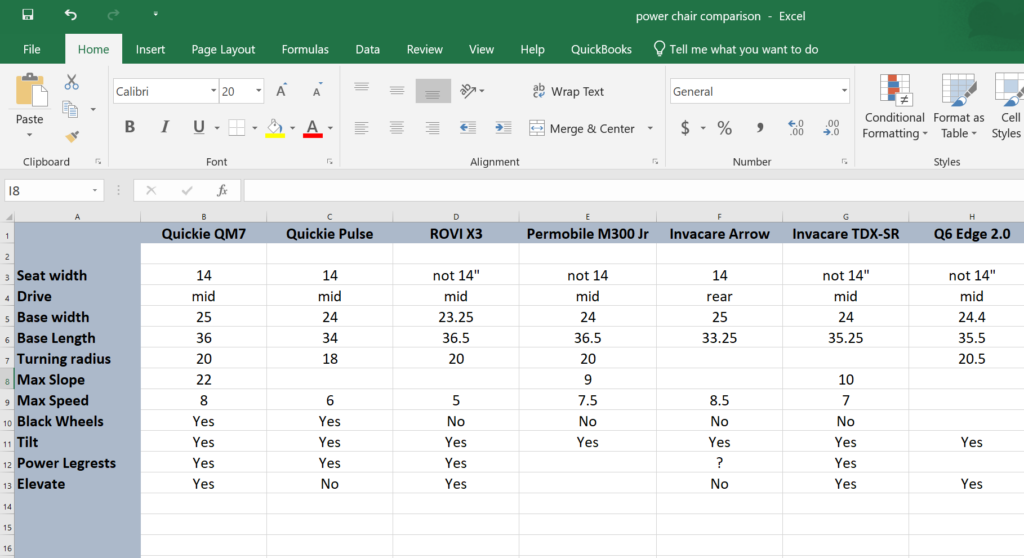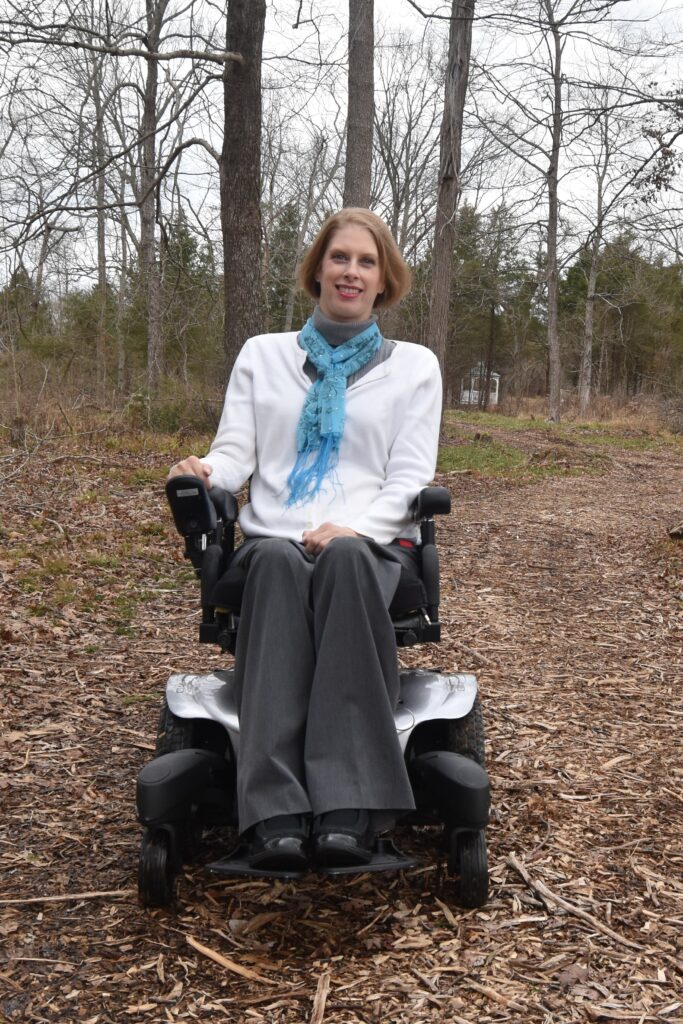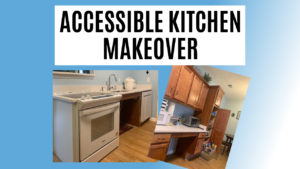Every five or six years the process begins: It’s time to choose a new power wheelchair. There are few decisions in life that affect me as much as what chair I use during the 14+ hours a day I am in it.
It’s overwhelming to know where to begin since technology changes so quickly. I begin by researching the makes, models, features and technology that were unavailable or have improved in the past decade.
Researching a new wheelchair for the present and future
The previous two power chairs I had were the same make and model. (Did I mention I despise change?) I had no major complaints about my chair other than receiving comments that it looked dated. However, I was willing to look at new options since the likelihood of my existing secondary conditions (decreased circulation, high risk for pressure sores, upper and lower back pain and fatigue) might progress over time.
I was not only looking for a chair that would meet my needs in the present, but a chair that will age, like a fine wine, with me.

In my research, I scoured the internet for specs of all the available makes and models of power chairs. I searched for reviews, watched YouTube videos on chair performance, and asked other chair users and durable medical equipment professionals for input. I also sat in and tried every chair in the running. (Front wheel drive chairs were immediately tossed out of the running when I couldn’t turn a corner to save my life.)
List the features you want
In an effort to get as much information as possible before making this big decision, I made a spreadsheet documenting the most important features to me:
- available seat widths
- available seat heights
- drive (rear, mid, or front)
- base width, base length
- turning radius
- maximum slope
- maximum speed
- wheel color options
- if tilt, power leg rests and elevating seat options were available
Seat width
The first thing I discovered is that several manufacturers of adult power wheelchairs do not make chairs in a 14” width. This was a huge – and disappointing – surprise. A few companies gave me the option to go with the pediatric base to get the proper width. But ultimately, I ruled out four chairs simply because they weren’t available in my width.
Base width, length and turning radius
The chair’s overall width, length and turning radius are important features to me since access to my house, van, office, and recreational activities revolve around the size and agility of my chair.

Maneuverability
The “off-roading” capabilities of a chair is also important to me. I want my chair to go wherever my friends and family go: outdoors, into grass, through gravel or unpaved areas – or heaven forbid – cobblestones. In addition, where I work sits on 62 acres with unpaved trails. I want to be able to safely and easily navigate these trails.

Reliability
Reliability is a no-brainer, but probably the hardest to gauge. I spoke with DME techs, seating and positioning specialists, dealers, etc. and asked for their input since I couldn’t find statistics on reliability online.
Does the wheelchair look good?
I want people to see me, not my chair. But in reality, people will always see Jenny, who uses a chair. Is the chair a nice “accessory”? We all like it when people complement us a new pair of shoes or article of clothing. Well, a power chair is the most expensive accessory I will ever own, so it better look good!
New features
In the beginning, I was adamant that I was not getting any of the “fancy features” that are now available.
Tilt
But after speaking with the seating specialist and my occupational therapist, they convinced me that getting the tilt feature could help with my back pain and prevent skin breakdown by changing my positioning during a long workday.
Power leg rests
Then I saw the “power center mount leg rest with articulation.” Translated, this means that the foot rest elevates and extends allowing one to raise their feet for enhanced circulation and/or stretch. The circulation in my feet has always been bad, but in the past few years I’ve had skin breakdown more frequently in my feet. The power center mount leg rest also raises and lowers the height of the footplate: perfect for shoes with different heel heights!
Elevate
The final feature I “gave in to” was the elevate function that raises the seat of the chair 12 inches. After years of seeing hotel beds increase in height and frequently being unable to transfer independently into these beds, I thought this could be a very useful feature. It has definitely been useful in hotels, as well as while cooking or attempting to reach something on a high shelf.
A Game of Give and Take
In the end, it was a game of give and take. I wanted great outdoor mobility, but I had to give up a more compact frame and turn radius to get the better outdoor mobility. By not getting the chair I previously had, I had to give up the gearless, brushless motors that I absolutely loved in order to get the features and updated design I was looking for.
I thoroughly researched my decision, discussed my options with the professionals, and knowingly gave up certain features in order to gain others.
Did I choose the right power wheelchair?
Did I pick the right wheelchair? I’m three years in and this chair has served me well. Here’s to hoping the next several years go just as smoothly.
The only things I’d change are the seat height and caster placement. “Almost the same” height is quite different than “the same” seat height. As a result, my knees get rammed into my kitchen table at times. Secondly, the casters on my chair stick out quite a bit – and my kitchen cabinets have paid the price. But the chair handles off-roading very well.
Some tips for picking out a new chair:
- Know what is most important to you in a chair.
- Rely on an independent seating specialist to give you the most unbiased opinion for what chair and options will meet your needs.
- Educate yourself as much as possible by speaking with those who are familiar with the chair(s) you are interested in.
- Demo the chair(s) in your own environment to ensure it’ll work. (Demos typically will not be in your size so there’s quite a bit of guesswork and finger crossing when it’s time to make that decision.)
You might also be interested in:
This content was originally posted on BardCare.com.







